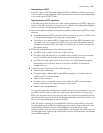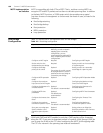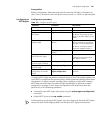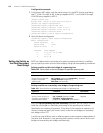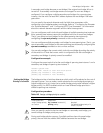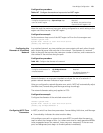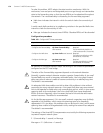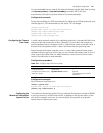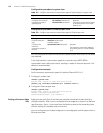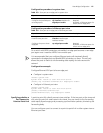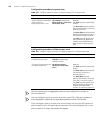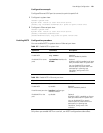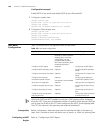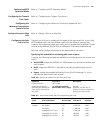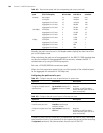
Root Bridge Configuration 175
It is recommended that you specify the network diameter and the Hello time by using
the stp root primary or stp root secondary command. MSTP will then
automatically calculate the optimal values of the three parameters.
Configuration example
Set the Forward delay to 1,600 centiseconds, the Hello time to 300 centiseconds, and
the Max age to 2,100 centiseconds on the future CIST root bridge.
<S5500> system-view
System View: return to User View with Ctrl+Z.
[S5500] stp timer forward-delay 1600
[S5500] stp timer hello 300
[S5500] stp timer max-age 2100
Configuring the Timeout
Time Factor
A switch sends protocol packets to its neighboring devices in the specified Hello time
interval to test the connectivity of links. Normally, if a switch does not receive any
protocol packets from its upstream switch in a period three times of the Hello time, it
assumes that the upstream switch is down and recalculates the spanning trees.
Spanning tree recalculation may also occur in a very stable network where certain
upstream switches are busy. In this case, you can increase the timeout time to four or
more times of the Hello time. For stable networks, a timeout time of five to seven
times of the Hello time is recommended.
Configuration procedure
Configuration example
Set the timeout time factor to 6.
<S5500> system-view
System View: return to User View with Ctrl+Z.
[S5500] stp timer-factor 6
Configuring the
Maximum Transmission
Speed of a Port
The maximum transmission speed of a port indicates the maximum number of BPDUs
a port can transmit in a Hello time interval. It depends on the physical status of the
port and the network structure. You can configure this argument as required in
system view or Ethernet port view.
Table 150 Configure the timeout time factor
Operation Command Description
Enter system view system-view —
Configure the timeout time
factor of a switch
stp timer-factor number Required
The timeout time of a switch
defaults to 3.



